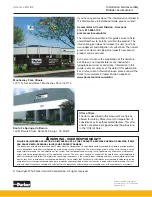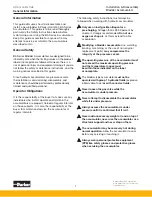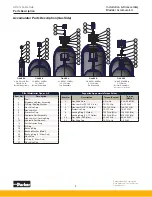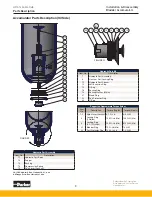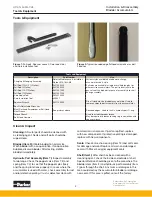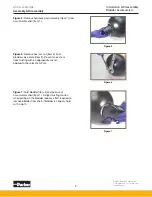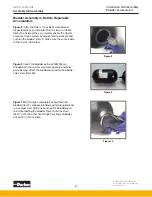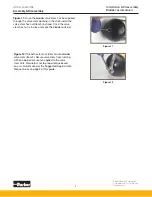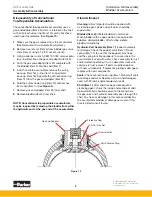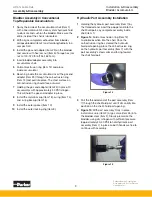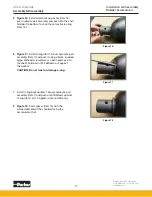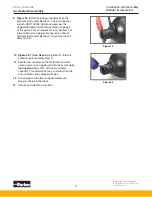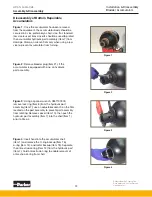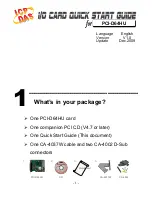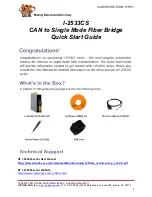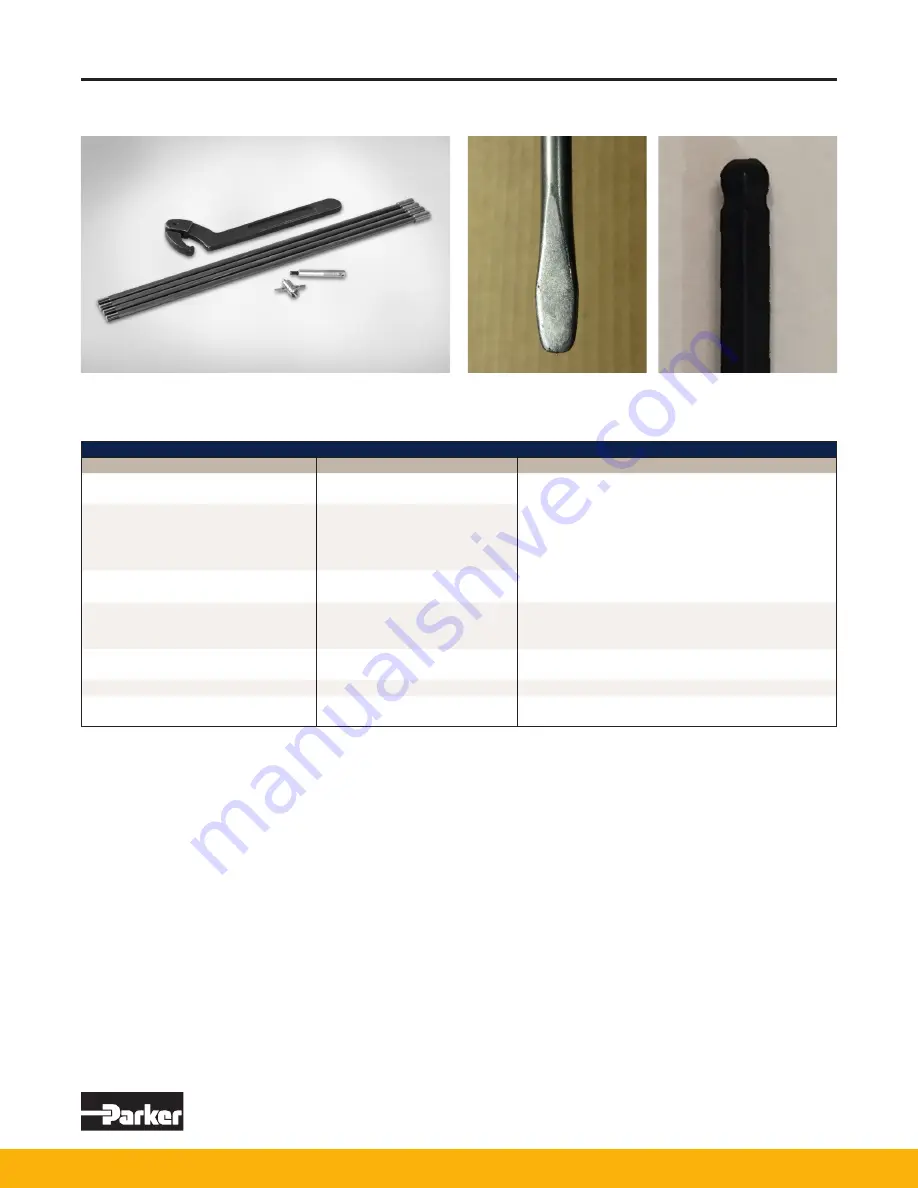
HY10-1632-M2.1/US
Parker Hannifin Corporation
Accumulator & Cooler Division
United States
Installation & Disassembly
Bladder Accumulators
4
Tools & Equipment
Tools & Equipment
Tools and Equipment
Description
Part Number
Use
Charging & Gauging Assembly
Refer to Maintenance & Installation
Guide HY10-1632-M2
Various styles available based on pre-charge,
accumulator size & style.
Pull Rod (1 Qt - 2 ½ Gallon)
085109 0250
Pull rods are available in single or multiple lengths for
different size accumulators. The pull rods attach to the
gas valve of the bladder for ease of assembly into shell
during assembly.
Pull Rod (5 Gallon)
085109 0500
Pull Rod (10-11 Gallon)
085109 1000
Pull Rod (15 Gallon)
085109 1500
Core Repair Tool
582441 0000
Core Installation Tool
300987
Spanner Wrench
085110 0000
Fits all standard size bladder accumulators. Used to
remove hydraulic port assembly from the accumulator.
Box Or Adjustable Wrenches
Blunt Flathead Screwdriver or Ball Head
Hex Wrench
See pictures above
Rounded edges. Used to tuck in hydraulic port O-ring.
Torque Wrench
Used to establish proper torque
Soft Head Hammer
May be required to loosen locking ring in conjection with
spanner wrench
Figure 1:
Pull rods, Spanner wrench, Core repair tool,
and Core installation tool
Figure 2:
Typical rounded edge flathead screwdriver or ball
head hex
Clean & Inspect
Cleaning:
All metal parts should be cleaned with
a cleaning agent. Seals and soft parts should be
wiped clean.
Bladder (Item 2):
Inflate bladder to normal size.
Wash bladder with a soap solution. If soap solution
bubbles, discard bladder. After testing, deflate
bladder immediately.
Hydraulic Port Assembly (Item 7):
Inspect assembly
for damage. Check the poppet valve (Item 7.2) and
spring (Item 7.4) to see that the poppet spins freely
and the spring functions properly. In cases where the
accumulator is used with water, check assembly for rust
and/or defective plating. If rust is detected, clean with
commercial rust remover. If parts are pitted, replace
with new components. If protective plating is damaged,
replace with new components.
Seals:
Check anti-extrusion ring (Item 12) and soft seals
for damage and wear. Replace all worn and damaged
seals with Parker’s original equipment seals.
Shell (Item1):
After shell has been cleaned with a
cleansing agent, check the inside and outside of shell.
Special attention should be given to the area where the
bladder stem (Item 2) and hydraulic port assembly (Item
7) pass through the shell. Any nicks or damages in this
area could destroy the accumulator bladder or damage
new seals. If this area is pitted, consult the factory.


